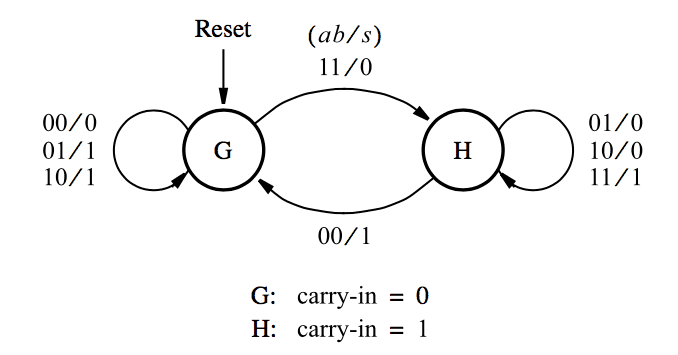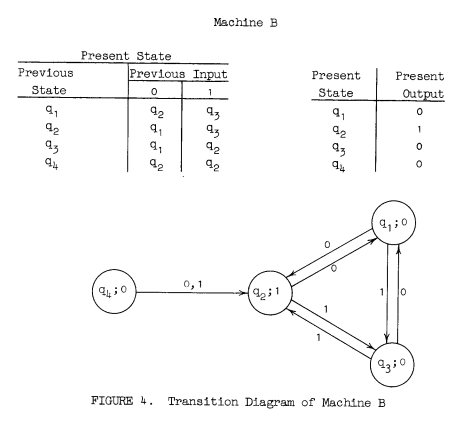California State University We study parallel adder circuits: Ripple-carry adder Carry-look ahead adder These adders are fast but expensive If speed is not critical, a more area-efficient scheme is to add the bits a pair at a time; which is called serial adder Serial Adder Using FSM. Serial Adder. If speed is not of great importance, a cost-effective option is to use a serial adder. Serial adder: bits are added a pair at a time (in one clock cycle). A=a n-1 a n-2 a 0, B=b n-1 b n-2 b 0. A finite-state machine (FSM) is a mechanism whose output is dependent not only on the current state of the input, but also on past input and output values. Whenever you need to create some sort of time-dependent algorithm in VHDL, or if you are faced with the problem of implementing a computer program in an FPGA, it can usually be solved. A finite-state machine (FSM) or simply a state machine is used to design both computer programs and sequential logic circuits. It is conceived as an abstract machine that can be in one of a finite number of user-defined states. The machine is in only one state at a time; the state it is in at any given time is called the current state. Moore State Machine. The Output of the State machine depends only on present state. The output of state machine are only updated at the clock edge. Let’s construct the sequence detector for the sequence 101 using both mealy state machine and moore state machine. Moore state require to four states st0,st1,st2,st3 to detect the 101 sequence.
- Serial Adder Verilog
- Vhdl Code For Serial Adder Using Finite State Machines
- Vhdl Code For Serial Adder Using Finite State Machine Design
- Vhdl Code For Serial Adder Using Finite State Machine Learning
- Serial Adder Circuit
Finite state machine is a graphical model/representation of sequential activities or events. After representing and modeling the events they can be implemented easily in case of sequential logic designs. Finite state machines can be utilized in many fields of study e.g neural networks, artificial intelligence, mathematics, games, robotics and sequential flow of data. Since we are dealing with the sequential circuits so i will explain their use in sequential circuit design in this tutorial. |
- Melay Machine
- Moore Machine
Moore Machine

- More number of states in moore compared to melay for same fsm.
- States changes after 1 clock cycle. Latency = 1.
- Synchronous output. Because the states are determined in a process.
- States are output.
Serial Adder Verilog
Mealy Machine
Vhdl Code For Serial Adder Using Finite State Machines
- Less number of states in mealy compared to moore for same fsm.
- State transition on the same clock cycle. Latency = 0.
- Asynchronous output.
- Transition are output.
Vhdl Code For Serial Adder Using Finite State Machine Design
Vhdl Code For Serial Adder Using Finite State Machine Learning


